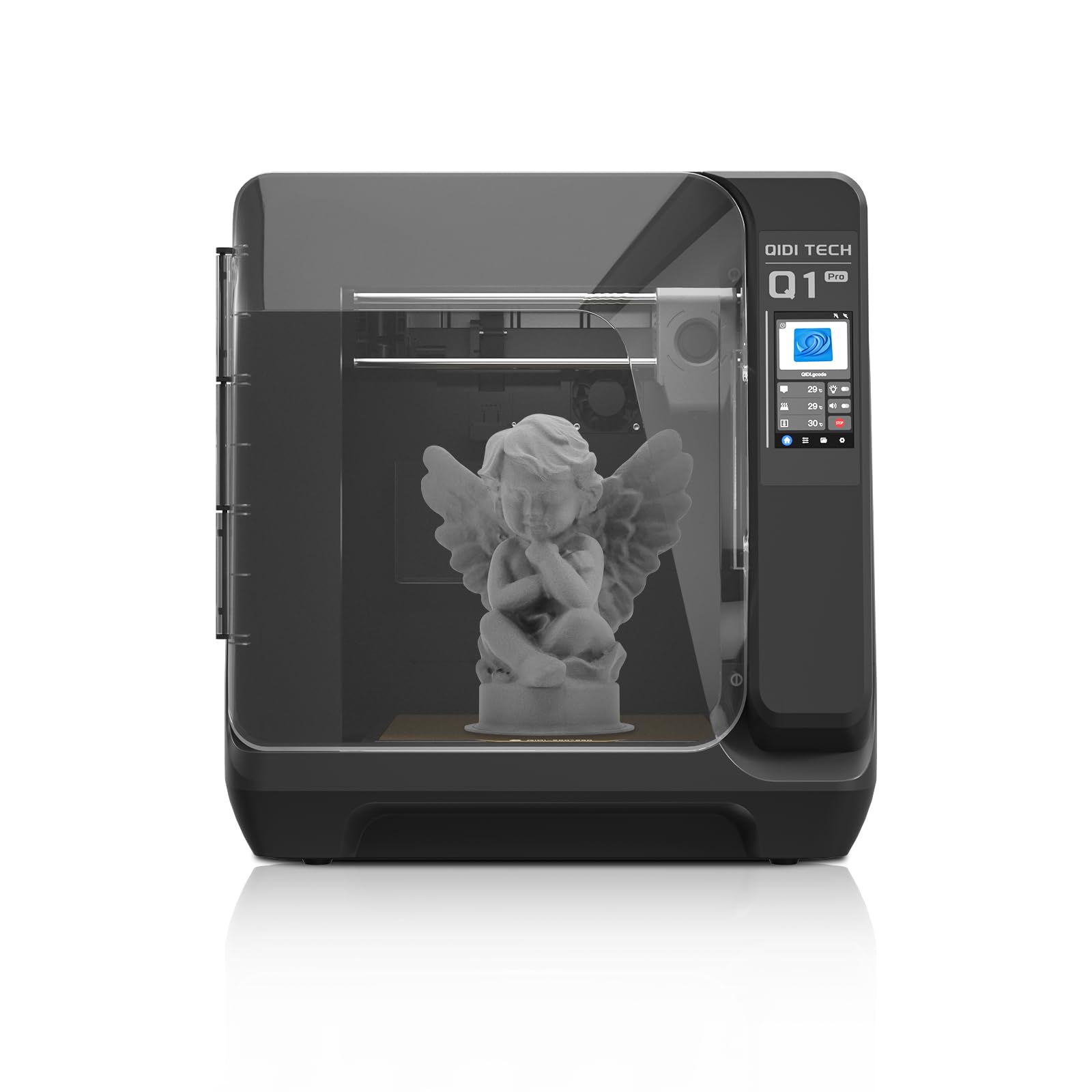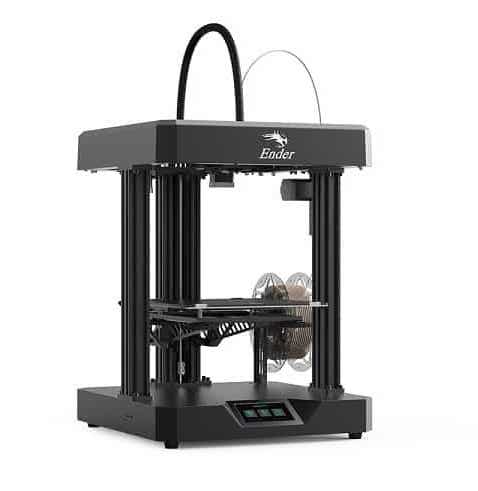Compare Q1 PRO vs Ender 7
Comparison between the best 3D printers
Choose the best 3D printer at the best price. The cheapest 3D printers are here.
Buy a 3D printer here with 3D Fila.
 |
 |
|
| Model | Q1 PRO[BUY Q1 PRO] |
Ender 7[BUY Ender 7] |
| Printing Material | Filament | Filament |
| Buy Filament for QIDI Q1 PRO | Buy Filament forCreality 3D Ender 7 | |
| Estimated price | $449,00 | $429,00 |
| Manufacturer | QIDI | Creality 3D |
| Release Year | 2024 | 2021 |
| Print Volume [mm] | 245x245x245 | 250x250x300 |
| Printer Size [mm] | 467x477x489 | 430x460x570 |
| Weight [kg] | 20 | 17,2 |
| Power Loss Recovery | YES | YES |
| Enclosed printer | YES | NO |
| Bed Leveling | Automatic | Manual |
| Filament End Sensor | YES | YES |
| Bed type | Heated | Heated |
| Power supply system | Direct Drive | Bowden |
| Standard nozzle | 0,4 | 0,4 |
| Maximum Nozzle Temperature [°C] | 350 | 260 |
| Maximum Bed Temperature [°C] | 120 | 100 |
| Maximum printing speed [mm/s] | 600 | 250 |
| Filament holder | YES | YES |
| Camera for supervision | YES | YES |
| Recommended filaments | PLA、ABS、ASA、PETG、TPU、PC、PA、PA-CF、PET-CF、PAHT-CF etc. | PLA, PETG, Tritan, Flex, ABS |
| Recommended slicers | QIDI Slicer/Cura/Simplify 3D/ORCA/PRUSA Slicer | Cura, Simplify, Slic3r, IdeaMaker |
| Maximum Resolution [mm] | 0,1 | 0,1 |
| Processor | Cortex-A53,64-bit Processor | Creality CR-FDM V.2.4.S1_V101 32bits |
| Display | Touchscreen 4,3'' | Display touchscreen 4,3'' |
| Power Supply | 350 W | 110/220V / 350W |
| Connectivity | WiFi/USB Flash Drive/Ethernet Cable | SD / USB |
| Operating systems | Windows, Linux, Macbook | Windows, Mac, Linux |
| Date of registration in the system | 2024-07-09 | 2022-11-04 |
| Release date | 2024 | 2021 |
| Extra features | The QIDI Q1 Pro 3D printer stands out for its Core XY structure and heating chambers that reach up to 60ºC, ideal for advanced materials such as ABS and Nylon. It features Klipper firmware, an automatic leveling system, a high-flow extruder with a double metal nozzle and a hotend that reaches 350ºC. It offers connectivity via Wi-Fi, USB and Ethernet, as well as a 1080p camera for remote monitoring and an intuitive touchscreen for easy operation. | Crealitys Ender 7 printer offers remarkable print speeds, utilizing CoreXY kinematics for precise and fast movement. With a 250x250x300mm build area, dual direct extruder, and custom hotend, the Ender 7 is capable of printing at high speeds, although quality may suffer on smaller prints. Assembly is relatively straightforward, but the machine is noisy and can get hot. Its true speed potential is most noticeable on larger prints, where it outperforms its competitors. |
| Support for multiple colors and materials (AMS and CFS) | NO | NO |
Notes * |
||
| Cost-benefit | 8 / 10 | 7 / 10 |
| Hardware | 5.4 / 10 | 2.4 / 10 |
| Tela | . | . |
| Print volume | 3 / 10 | 4 / 10 |
| Performance | 5 / 10 | 2 / 10 |
| [BUY Q1 PRO] | [BUY Ender 7] |
Conclusion |
| In comparing the QIDI Q1 Pro and the Creality Ender 7, both 3D printers offer unique advantages catering to different user needs and preferences. The QIDI Q1 Pro, with its more recent 2024 release, features an enclosed design, automatic bed leveling, and a higher maximum nozzle temperature, which facilitates printing with a wider range of advanced materials. It also boasts superior connectivity options and has been designed for enhanced performance, making it an excellent option for users looking for quality and versatility in their 3D printing projects. On the other hand, the Ender 7, released in 2021, provides a large print volume and impressive speed capabilities, especially for larger prints. However, it lacks the enclosed build, automatic leveling, and wider material compatibility found in the Q1 Pro. While the Ender 7 is easier to assemble and more affordable, it may produce noisier operations and reduced quality on smaller print jobs. Ultimately, if you prioritize modern features, material versatility, and convenience, the QIDI Q1 Pro is likely the better choice. Conversely, if budget considerations and straightforward assembly for larger projects are more important, the Creality Ender 7 remains a solid option. Each printer presents favorable cost-benefit scenarios, ensuring that users can find a model that aligns with their specific 3D printing needs. |

